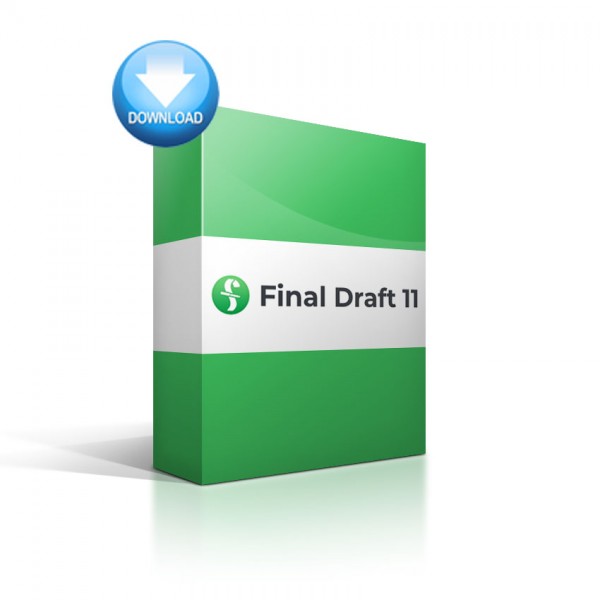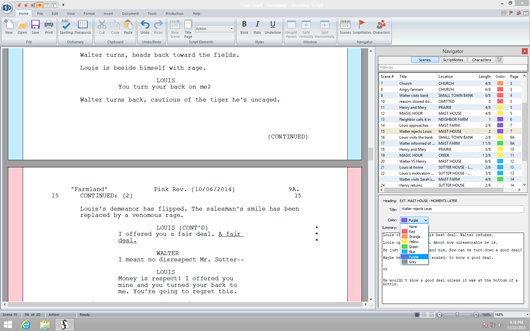

Final draft software analytics install#
However, let me drop in three personal observations when it comes to software popularity.ġ) Consumers are increasingly less rigid about adopting new software as general computer literacy becomes more and more the de facto standard than an elite skill set our nation’s nephews and nieces used to browbeat their family members with whenever anyone couldn’t figure out how to, say, install an antivirus app.Ģ) Software is being developed in a much more agile way, and with far less overhead. Remember Betamax?Īnd when it comes to popularity, and number of users, Final Draft, at least for now and the immediate future, is the platform most screenwriters appear to be using. Unfortunately, the best product isn’t always the one that’s most popular. It’s human nature to want to know, before you buy: What’s the best product?
Final draft software analytics movie#
Movie Magic Screenwriter?įact: Nobody wants to be the only gal in the room using the software that nobody else is using. How many people are using Final Draft vs. That’s what I’m going to find out in this article, one feature or design flaw at a time.

So how do these two screenwriting programs measure up? Both to one another and to the state of modern app usability, and to what screenwriters want and need from a screenwriting app? (And now you know why they call them “pitches.”) Most screenwriters are the ones on the other side, with the pitchforks.


The fact is, most screenwriters aren’t the ones inside the Hollywood gates. the substance of many conversations and arguments about which screenwriting platform is the best (whether that conversation is in forums, or on Reddit, or in snarky blog comments) seems to always come back to someone asking the same question: Should I use Movie Magic Screenwriter or Final Draft?īut what I’ve never seen, in all my internet travels hither and yon, is a detailed assessment of these two software suites, pitted against each other, using criteria and metrics that go beyond the “feature-bloat” features that each seem to suffer from, and go straight to the heart of what matters most: How usable are these two programs to screenwriters in a real-world situation? (Whether that real world situation is multi-million-dollar film production or Jerry from Iowa and Jill from Washington writing the spec scripts that are going to save Hollywood.) And the two most dominant in the last decade or so? You guessed it: Movie Magic Screenwriter and Final Draft.īut as I write this article, I find it a bit odd that while marketplace is fairly replete with a score of alternatives as of the last half decade or so - Fade In, Slugline, Adobe Story, CeltX, Highland, Scrivener, etc. Why is that? Because there have only been a small handful of screenwriting programs available. But I’ve only used a small handful of screenwriting programs. Since then, I’ve written, co-written, or worked on hundreds of feature screenplays. I hit RETURN, just like I’d done a billion times before when writing in Microsoft Word and other word processors. In short, with all due praise to John Hodgman, I was a “PC.”Ī different kind of “PC,” Production Coordinator Joey Geiger laughed at me because I didn’t instinctively know to hit TAB to get from the scene heading to start typing the action text below. It was on a “Macintosh” because I didn’t call them “Macs” back then. At Roger Corman’s Concorde-New Horizons Studios in 1997, I opened a script file using Final Draft for the first time.


 0 kommentar(er)
0 kommentar(er)
